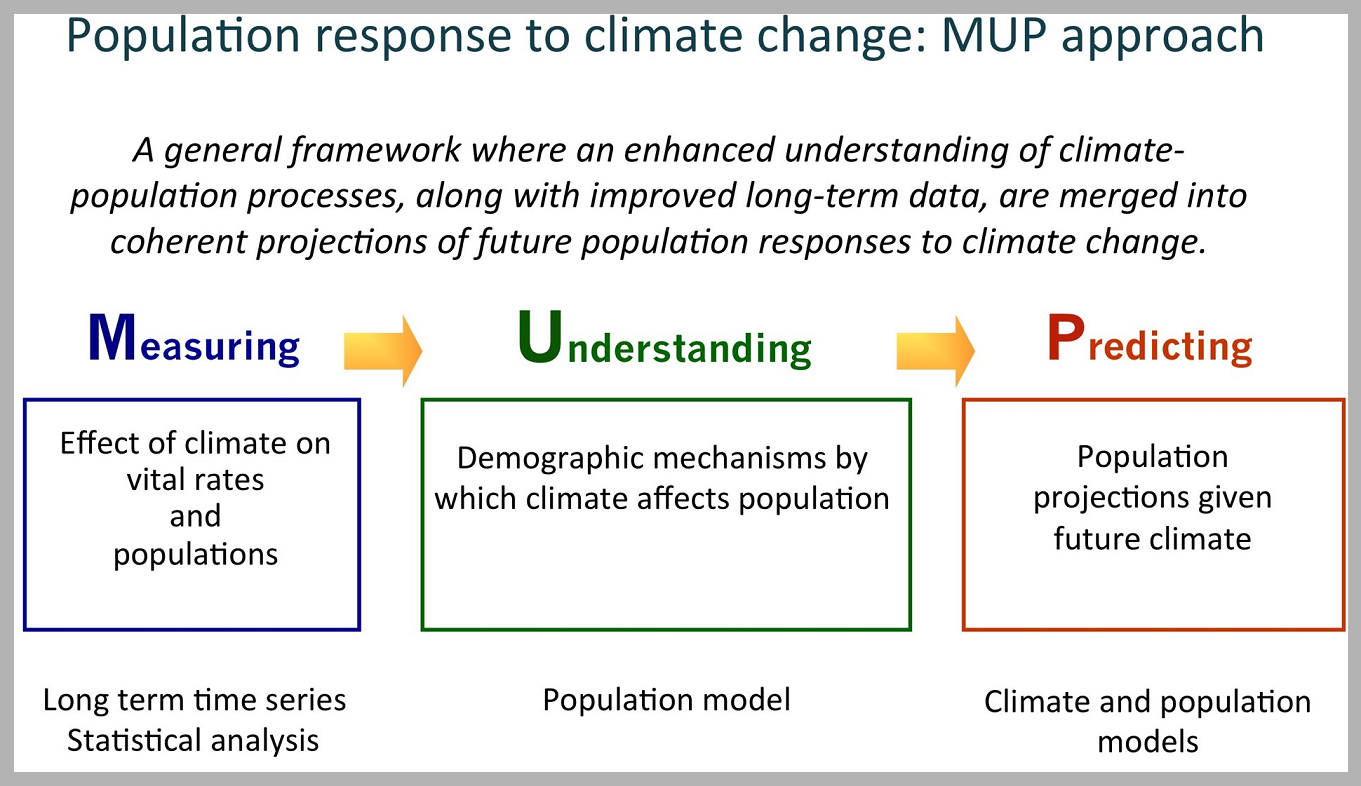About
Large changes are occurring in the Earth’s climate and in the ocean’s physical characteristics and climate models project that these changes will continue into the next century. There is a pressing need to better understand and predict the ecological responses of present and future climate changes.
We seek to understand and predict the population responses to current and future climate change and other human activities for a community of seabirds, “sentinel of climate change” by linking climate models to demographic models. As such, our research is highly inter-disciplinary, centered in population dynamics and seabird ecology, but with strong linkages to conservation biology, physical oceanography and climate modeling.
Our methods include data collection from a range of seabirds breeding in the Southern Ocean, analysis of historical data, theory and process oriented modeling. We have developed a three-steps MUP approach (Measuring – Understanding – Predicting).
- Measuring the impacts of climate change on the life history traits (e.g., behaviors, phenology, vital rates) and populations of marine species using state-of-the art statistical analysis. we are participating in long-term field programs in Sub- Antarctica and Antarctica.
- Understanding the processes by which population respond to climate change. We develop demographic models including life history traits of individuals using the latest developments in the field of mathematical ecology.
- Predicting the population responses to future climate change using climate forecast models developed in the assessment report of the Intergovernmental Panel on Climate Change (IPCC). We develop novel approaches to link climate and demographic models by working directly with physical oceanographers and climatologists.

